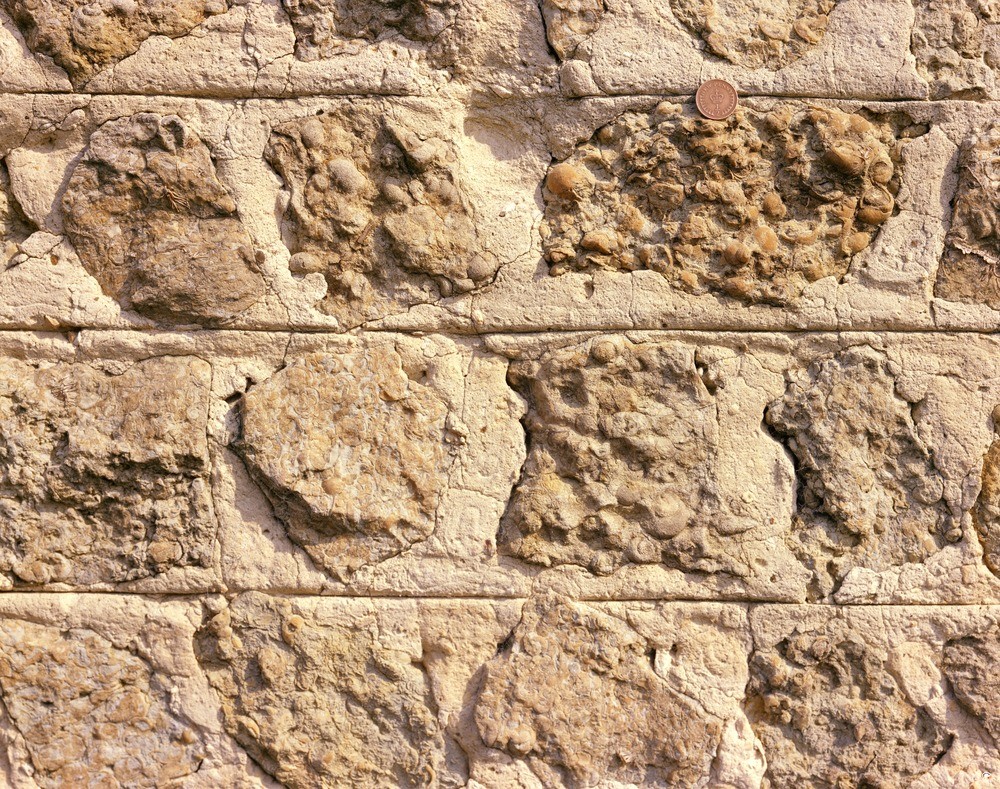| P number: | P211793 |
|---|---|
| Old photograph number: | A12275 |
| Caption: | Barn wall, Stone Cross near Laughton, Sussex. Looking south-east. |
| Description: | The lack of good building stone in the Lower Cretaceous succession of the Weald meant that any moderately hard rock was used for building purposes. The thin limestones of the Weald Clay Formation, rarely more than a few tens of centimetres in thickness, were widely quarried and used for building and decorative stone. Detail of limestone walling material at Stone Cross near Laughton. Looking south-east. The fossiliferous limestone blocks contain abundant examples of the freshwater gastropod Viviparus (large 'Paludina') in barn walling. The thin freshwater fossiliferous limestones found throughout the Weald Clay Formation were commonly used for local building material in the absence of any other hard stones. They are variously termed the Paludina limestones, Sussex, Bethersden or Wealden marbles. Occasionally they were polished and used as decorative stones in local churches. |
| Date taken: | Mon Jan 01 00:00:00 GMT 1973 |
| Photographer: | Jeffery, C.J. |
| Copyright statement: | NERC |
| X longitude/easting: | 551060 |
| Y latitude/northing: | 112370 |
| Coordinate reference system, ESPG code: | 27700 (OSGB 1936 / British National Grid) |
| Orientation: | Landscape |
| Size: | 437.56 KB; 1000 x 789 pixels; 85 x 67 mm (print at 300 DPI); 265 x 209 mm (screen at 96 DPI); |
| Average Rating: | Not yet rated |
| Categories: | Unsorted Images, Geoscience subjects/ Economic geology/ Building stones |
Reviews
There is currently no feedback

